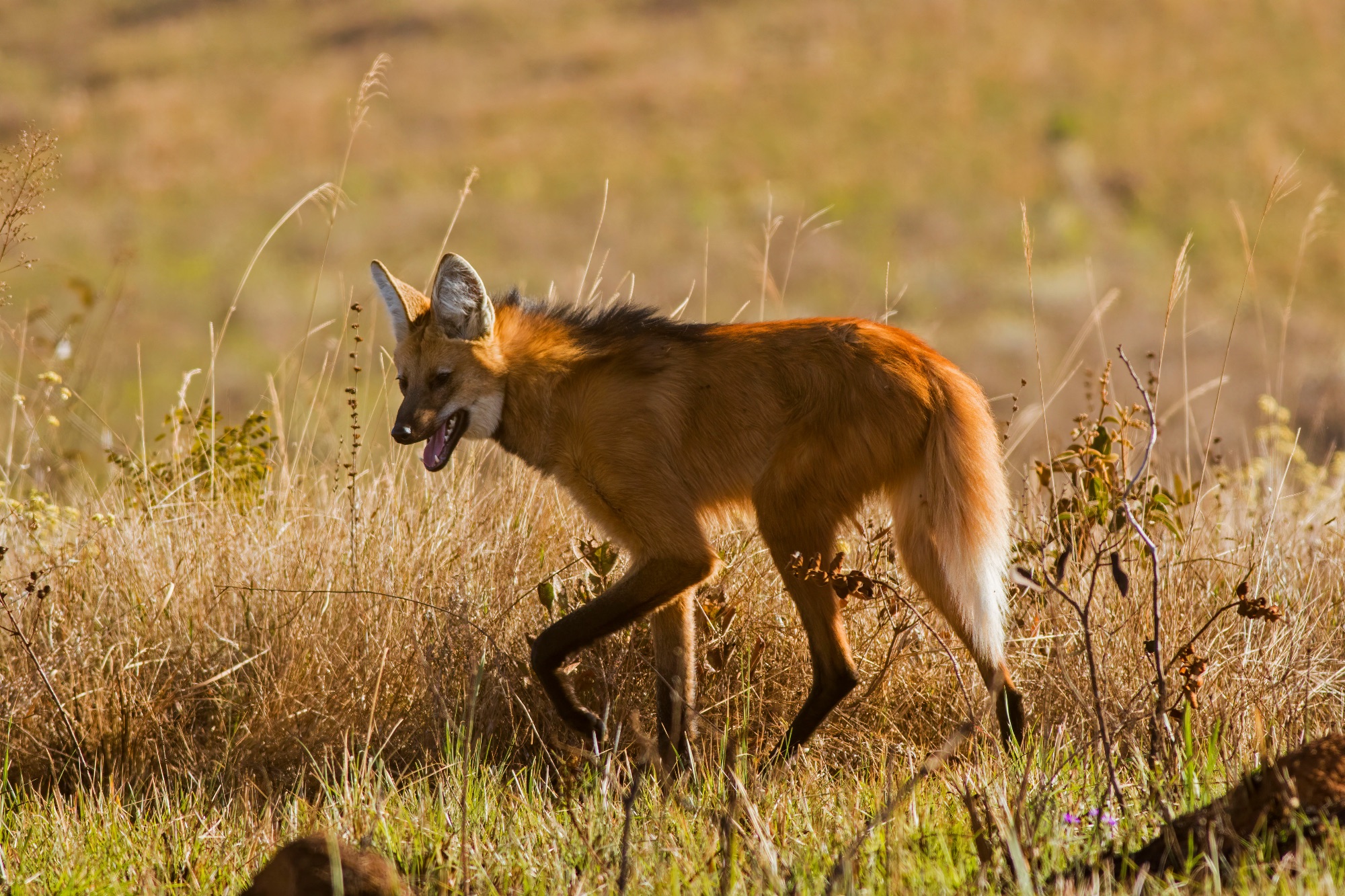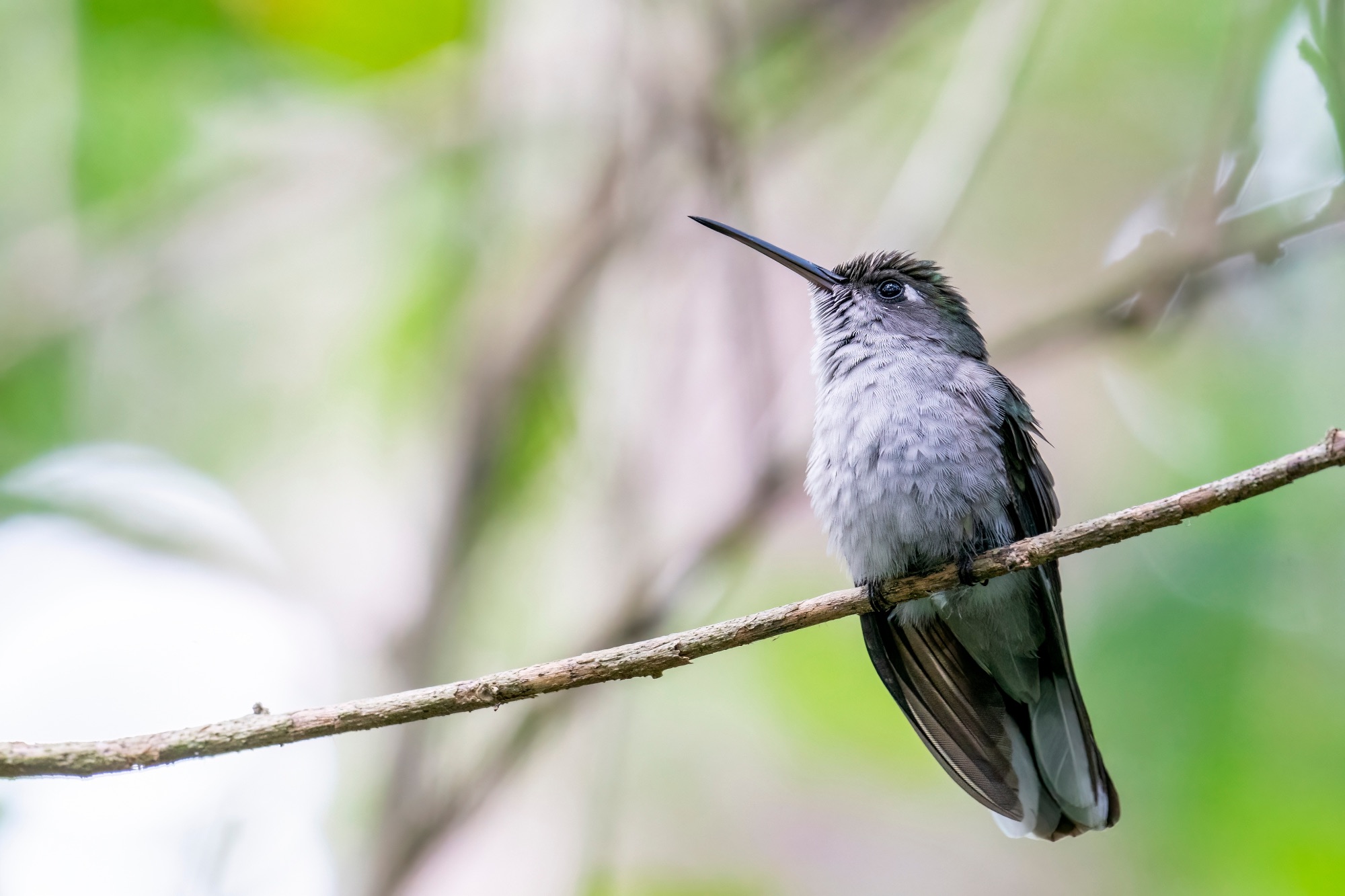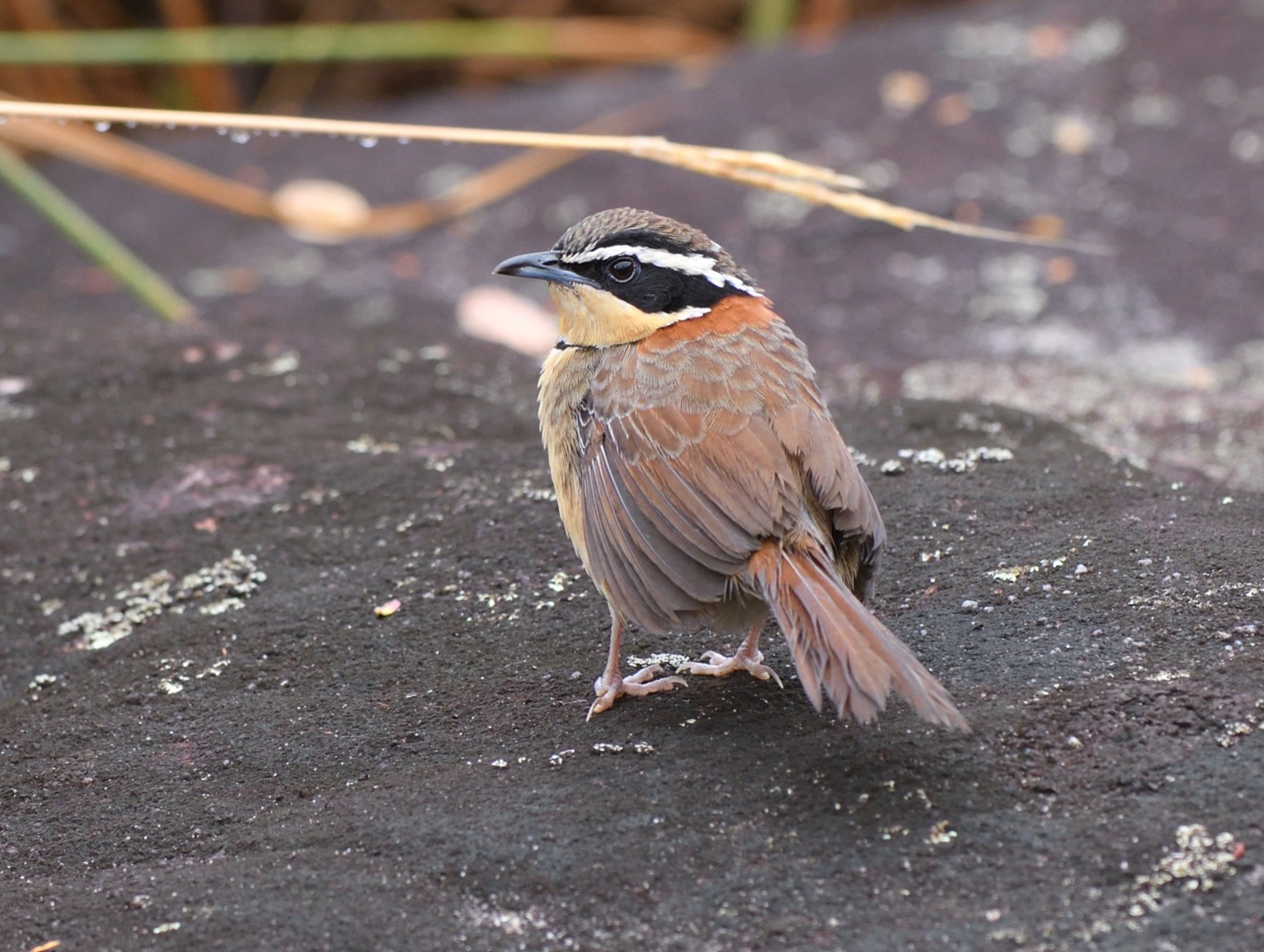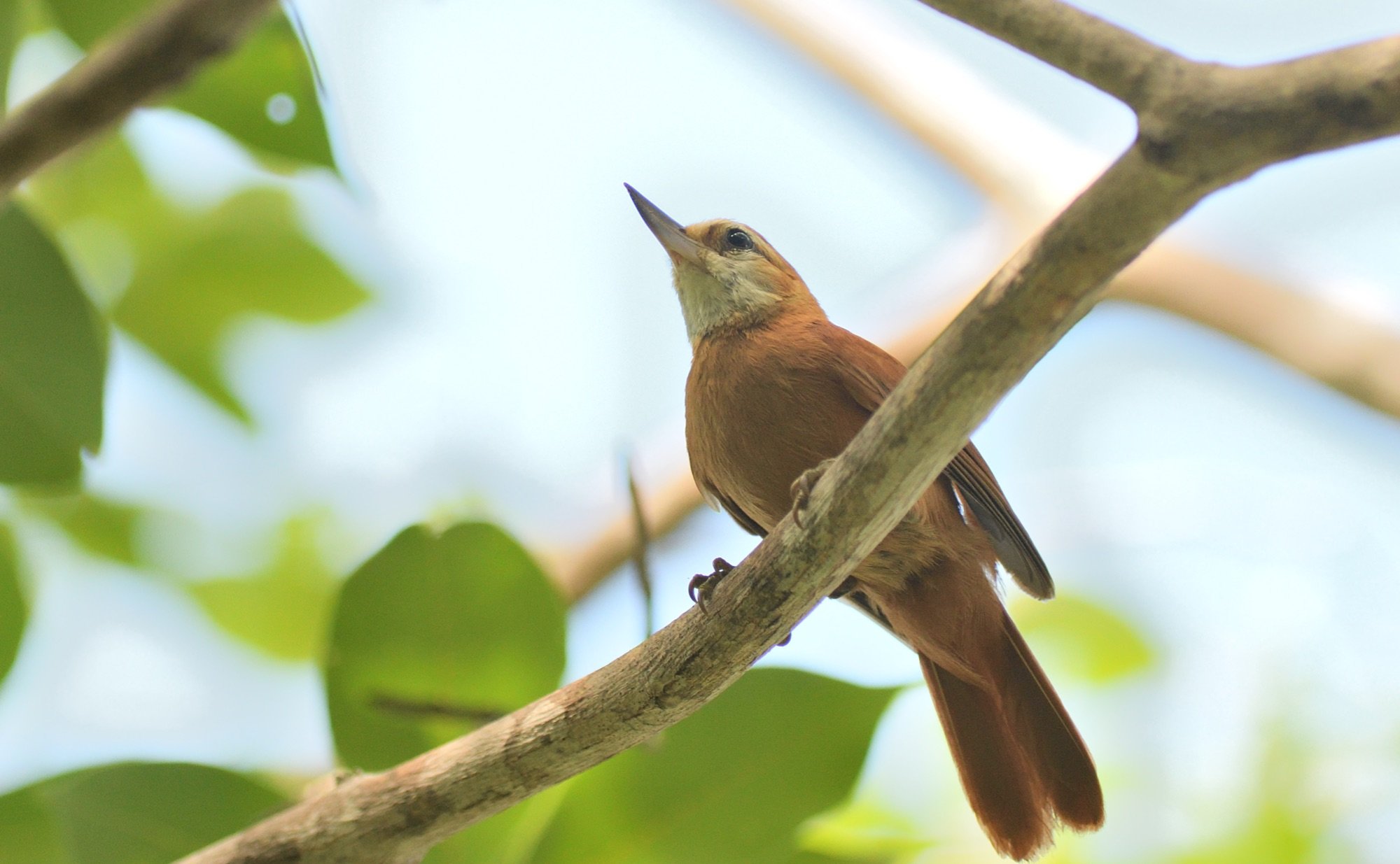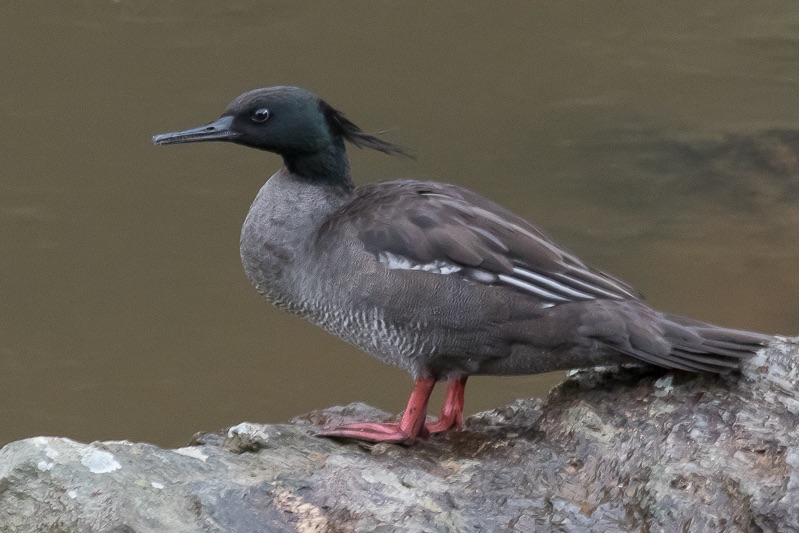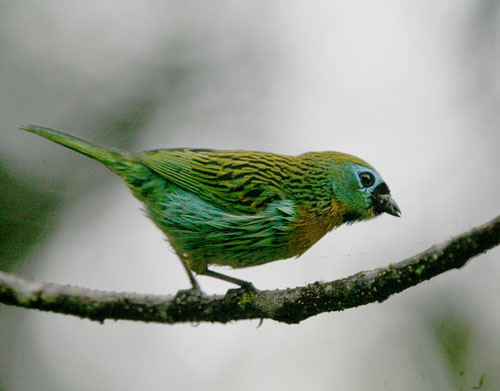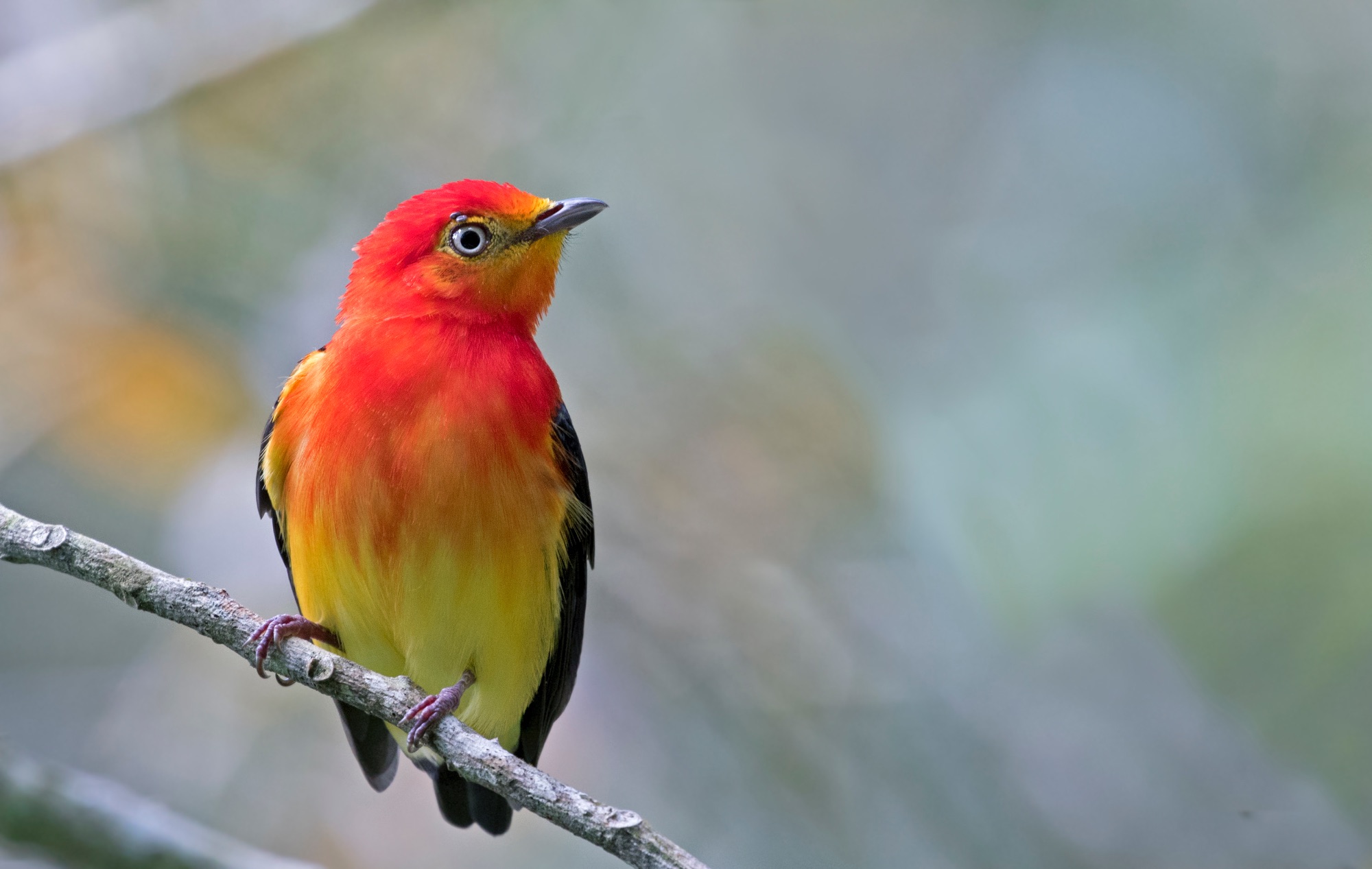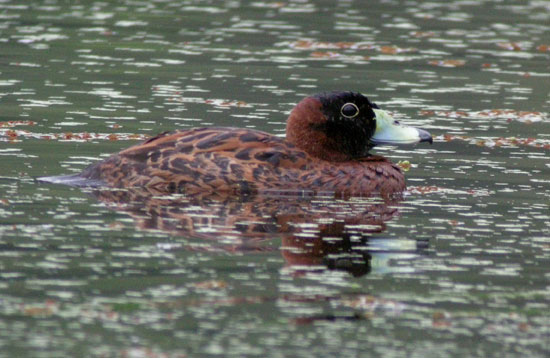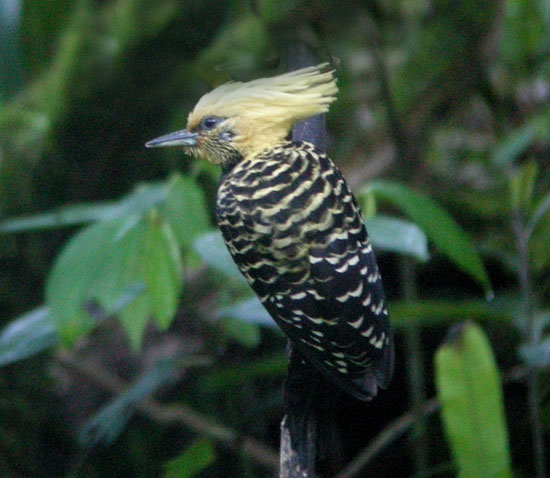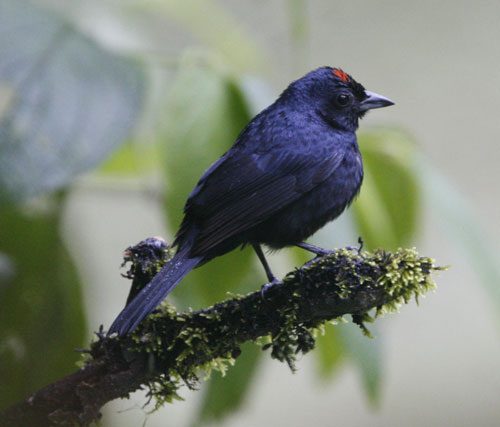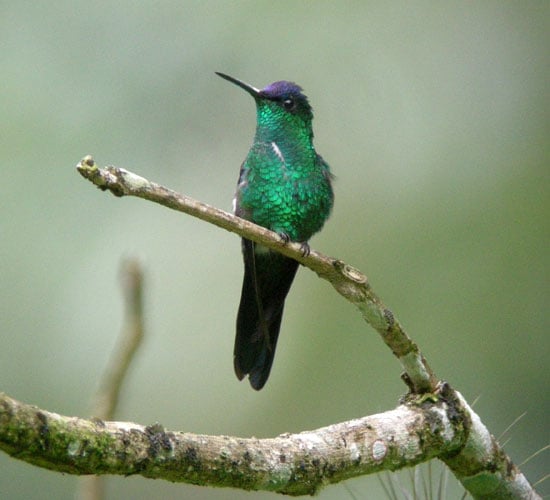Day 1 Arrival in Montes Claros - Botumirim - 12th August
Following a morning arrival into Montes Claros, we will drive 180kms to Botumirim where we should have a few hours birding in the afternoon. Night in Montes Claros.
Day 2 Botumirim
How could we talk about Botumirim without talking about the rediscovery of the Blue-eyed Ground-Dove, one of the most exciting findings of the century! In 2015, a good friend of ours, Rafael Bessa, was on an environmental consultancy in the Botumirim area. As usual, when we do this type of work, we have designated coordinates to go for the bird surveys. To get to one of the coordinates, Rafael decided to take a shortcut and passed exactly in front of what is today the Blue-eyed Ground-Dove Nature Reserve. He told us he was astonished with that beautiful and somewhat different habitat that grasped his attention. Although curiosity had already aroused, he could not stop since he had to get to the coordinate to proceed with the surveys. As soon as the field campaign finished, Rafael decided to visit that interesting location early the next day. As soon as he jumped out of the car, he heard something quite different, that sounded a bit like a frog, but not quite: surely something he had never heard before, so he decided to record the vocalization and play it back to reel in the thing that was making that sound. As soon as he played it back, the Blue-eyed Ground-Dove instantly jumped right in front of him. Today, this species is still only found in Botumirim and one of the main areas where the Ground-Dove lives is a Nature Reserve managed by Brazilian NGO SAVE Brasil. The Reserve, together with the Botumirim State Park, protect an area of 35.000 hectares of preserved Cerrado and Campo Rupestre. Botumirim is a very interesting area of ecotones; here we can find Caatinga, Cerrado and Atlantic Forest specialties.
It is obvious that our main target here will be Blue-eyed Ground-Dove (Columbina cyanopis). The Ground-Dove is critically endangered and an extremely sensitive species, therefore it is prohibited to use playback. But with patience, as the territories are well-known, we have very good chances of seeing this beautiful bird. Since we will be in the Espinhaço Mountain Range, there will be a few species associated with this rocky environment that we will also target like Hyacinth Visorbearer, Cinereous Warbling-Finch and, with a lot of luck, Cipo Canastero. There are a few other interesting species that we might see such as White-wedged Piculet, White-browed Antbird, Copper Seedeater, Pin-tailed Manakin, Pale-throated Pampa-Finch (Also known as Serra Finch), Spot-tailed Nightjar, Narrow-billed Antwren, Greater Thornbird, Chotoy Spinetail, Greenish Schiffornis, Pale-bellied Tyrant-Manakin, Horned Sungem, Scarlet-throated Tanager, Chesnut-capped Foliage- gleaner and others.
Day 3 Botumirim - Peruaçu National Park
It's going to be a 400km drive towards the wonderful wooded caatinga habitat of Peruaçu National Park, so we'd best make the most of the early morning to chase any species still needed around Botumirim.
Day 4 Peruaçu National Park
There are a number of specialities to search for here including the rare endemics Moustached Woodcreeper, Plain-tailed Nighthawk and White-throated Seedeater, Other endemics here are White-browed Guan, Sombre Hummingbird, Outcrop (Dry Forest) Sabrewing, Great Xenops, Red-shouldered Spinetail, Sao Francisco Black Tyrant and Sao Francisco Sparrow, as well as near-endemics such as Rusty-margined Guan and Sibilant Sirystes. We also hope to see the uncommon endemic Wagler's Woodcreeper - a potential split from Scaled Woodcreeper.
Other possibile species include White-bellied Nothura, Yellow-legged Tinamou, Grey-cowled Wood-Rail, Black-banded Owl, Rufous Nightjar, Grey-headed Kite, Plumbeous Pigeon, Pearly-breasted Cuckoo and many more.
Day 5 Peruaçu National Park - Montes Claros
We will have the morning at Peruaçu National Park before driving 220kms back to Montes Claros.
Days 6 - 7 Montes Claros - Caraça Sanctuary
Another long drive of 540kms to get to Caraça Sanctuary but we'll have a full day here to explore such a fantastic area. The “Santuário do Caraça” complex comprises about 11.000 hectares and it is property of the Catholic Church. It is a private reserve where the vegetation is characterized by its transition between Atlantic Forest and Cerrado, with outcrops of campo rupestre in higher altitudes. Due to these aspects, there is a rich biodiversity, including many mammals such as Maned Wolf, Giant Anteater and maybe some species of monkeys, such as Black-fronted Titi Monkey. This place is famous for its great architecture, cozy breakfast facility and, of course, the Maned Wolf that sometimes comes to feed close to the facilities in the evening. Here, we generally bird in altitudes ranging from 1200 to 1300 meters. The facilities where we sleep are practically inside the forest and the trails will be nearby.
Our main target here is the Serra Antwren and we will have chances to see many other birds such as Blackish Rail,Hyacinth Visorbearer, Scaled Woodcreeper, White-shouldered Fire-eye, Pin-tailed Manakin, Grey-backed Tachuri, Orange-eyed Thornbird, Cinnamon Tanager, Gilt-edged Tanager, Brassy-breasted Tanager, Hepatic Tanager, Pale-throated Pampa-Finch,,Rock Tapaculo, Velvety Black-Tyrant and many others.
Days 8- 9 Caraça Sanctuary - Serra do Cipó
We can spend the whole morning at Caraça Sanctuary before setting of on the 170kms drive to Serra do Cipó. The Cipó National Park includes 33,800 hectares of designated parklands being acquired to preserve the highly endemic plant and animal life of this “serra system”. A remarkable place with fantastic and very local birds. A place you could not miss on a visit to the state of Minas Gerais.
There are 2 local endemics in this region that are worth highlighting, Cipo Canastero and Cipo Cinclodes. We will have to give these 2 targets a special effort since they are not at all easy targets to find. Other specialties include Rock Tapaculo, Hyacinth Visorbearer, Horned Sungem, Checkered Woodpecker, Lesser Grass-Finch, Pale-throated Pampa-Finch, Blue Finch, Streamer-tailed Tyrant, Stripe-tailed Yellow-Finch, Long-tailed Reed-Finch and Cinereous Warbling-Finch. There is another very interesting target; the range-restricted and recently described [2017] Diamantina Sabrewing. However, only 20-30% of the groups are lucky enough to see it. We will of course also try for Marsh Tapaculo, another ghost! Let us consider ourselves lucky if we even hear this bird.
Day 10 Serra do Cipó - Pompéu
After spending the morning at Serra do Cipó we will drive 210kms to Pompéu.
Day 11 Pompéu - Serra da Canastra
Pompéu is considered a crake paradise in Brazil. Two brothers, the “Pompeu Twins”, have been taming quite a few species of crakes. As of today, we have good opportunities of seeing some “true ghosts” such as: Ocellated Crake, Russet-crowned Crake, Grey-breasted Crake and more. Unlike “Serra da Canastra” or “Serra do Cipó”, the habitat here is not protected. We will cover long distances of degraded habitat from our hotel, based inside town, to go from patch to patch of good preserved cerrado looking for the specific targets we need. Besides the ghostly crakes mentioned above, there are a few other species we will look for such as Least Nighthawk, Caatinga Puffbird, Checkered Woodpecker, Chapada Flycatcher, Chestnut-capped Foliage-gleaner, Coal-crested Finch, Black-faced Tanager and many more. After we have finished our birding here we will drive 300kms to Serra da Canastra where we will spend the next 3 nights.
Days 12 - 13 Serra da Canastra
The Serra da Canastra National Park, in southwest of Minas Gerais, has some of the most breathtaking and undiscovered landscapes in Brazil. It has almost 200.000 hectares and covers 6 municipalities: São Roque de Minas, Vargem Bonita, Sacramento, Delfinópolis, São João Batista do Glória and Capitólio. We will be based in São Roque de Minas. The region is the cradle of many rivers that help form the São Francisco and Paraná basins. The landscape alternates between rocky fields (campo rupestre) full of delicate flowers, typical cerrado (open grasslands, wooded savanna, typical savanna) and gallery forests with lush Atlantic vegetation. It is in these environments that endangered animals such as the Giant Anteater, Maned Wolf, Giant Armadillo and Brazilian Merganser are protected. Our main target here is, of course, Brazilian Merganser and our first day will be solely dedicated to finding it. Depending on local up-to-date information, the guide will decide if the group will begin the search in the lowlands or highlands. Due to its rarity and sensibility, it is forbidden to use playback for the merganser. The strategy here is to choose one of its many territories/visiting/feeding areas and wait. Patience is key in this situation. Besides the merganser, there are several cerrado birds that we will have to look for in the highlands (plateau). To access this area of the park we will have to drive 8km in a treacherous dirt road until we reach the plateau. Entering the park, we will be birding on the main road looking for cerrado specialties.
In addition to having good chances of seeing the rare Brazilian Merganser, there are several other species that live in this habitat of high altitude cerrado, such as Campo Miner, Grass Wren, Cock-tailed Tyrant, Sharp-tailed Tyrant and Black-masked Finch among others. We also have great chances of finding Brasilia Tapaculo in the streams that are in the high part of the mountain range. There are also some areas of gallery forest, where we can find the beautiful Helmeted Manakin, whilst other species include Greater Rhea, Red-legged Seriema, Toco Toucan, Golden-capped Parakeet, White-wedged Piculet, Large-billed Antwren, Firewood Gatherer, Yellow-rumped Marshbird, White-striped Warbler, Ochre-breasted Pipit, Collared Crescentchest, White-banded & White-rumped Tanagers, Cinereous Warbling- Finch, Great Pampa-Finch, Collared Crescentchest and many more.
Day 14 Serra da Canastra - Belo Horizonte - End of Tour - 25th August
After some final birding we will transfer 350kms to Belo Horizonte where the main tour will end. Plan on booking your flight back home late this afternoon after 4pm if not continuing with the post-tour extension.
**************** Carajás National Forest Extension ***************
Extension Day 1 Belo Horizonte - Carajás National Forest - 26th August
Following a short flight from Belo Horizonte we should arrive at our base close to Carajás National Forest in time to do a little birding before dinner.
The Carajás National Forest is where there is the biggest mining project in Brazil, with tons of Iron, Gold, Manganese, Granite and Copper are exported daily. With an area of 400,000 hectares. It also has the conservation of biodiversity as its goals, being home for many magnificent and restricted bird species.
Extension Days 2 - 5 Carajás National Forest
We have 4 full days to explore the amazing Carajás National Forest. Key target species include Dark-winged Trumpeter (dextralis), White-crested Guan, Chestnut-headed Chachalaca, Cryptic Forest-Falcon, Silky-tailed Nightjar, Pearly Parakeet, Rufous-throated Sapphire, Dot-eared Coquette, Guianan Red Cotinga, White-tailed Cotinga, Para Foliage-Gleaner, Carajas & Brigida's Woodcreeper, Snethlage's Scythebill, Peruvian Recurvebill, Rufous-faced Antbird, Variegated & Snethlage's Antpitta, Purple-breasted Cotinga, Ash-throated Casiornis, Chestnut-belted Gnateater, Rose-breasted Chat & Opal-crowned Manakin,
Other species present include Brazilian Tinamou, Small-billed Tinamou, Bare-faced Curassow, Red-throated Piping-Guan, Rusty-margined Guan, Marbled Wood-Quail, Hoatzin, Harpy Eagle, Black-and-white Hawk-Eagle, Scarlet-shouldered Parrotlet, Red-fan Parrot, Hyacinth Macaw, Pavonine & Pheasant Cuckoos, Black-bellied Thorntail, White-throated & Waved Woodpecker, Rufous-necked Puffbird, Rufous-capped Nunlet, White-browed Purpletuft, White Bellbird, Great Jacamar, Dusky Leaftosser, Curve-billed Scythebill, Uniform Woodcreeper, Para Woodcreeper, Chestnut-throated Spinetail, Sharpbill, Natterer's Slaty-Antshrike, Xingu Scale-backed Antbird, White-browed Antbird, Wing-banded Antbird, Manu Antbird, Spix's Warbling Antbird, Blackish Antbird, Banded Antbird, Grey Antbird, Amazonian Antpitta, Amazonian Royal Flycatcher, Black-and-white Tody-Flycatcher, Blackish Pewee, Ruddy, Chestnut-throated, Sooty-fronted & Pale-breasted Spinetails, Black-bellied Gnateater, Plain-crested & Lesser Elaenias, Zimmer's Tody-Tyrant, Black-chested Tyrant, Pale-bellied Tyrant-Manakin, Fiery-capped Manakin, Riverbank Warbler, White-naped Jay, Wing-barred Seedeater and Yellow-bellied Dacnis amongst many more possibilities.
There are a few nightbirds that we could look for as well, such as Xingu Screech-Owl, Tawny-bellied Screech-Owl, Black-banded Owl & Crested Owl, Ocellated Poorwill.
Extension Day 6 Carajás National Forest - Belo Horizonte - 31st August
Depending on our flight time we may have the morning to catch up with any species still missing from our lists before heading to the local airport and taking the return flight to Belo Horizonte.

